One of the first things you notice when you walk into someone’s home is their flooring. Why not make them jealous with real hardwood flooring locally sourced from Minnesota. With a variety of species and finishes to choose from, you’re bound to find the perfect fit for your home.
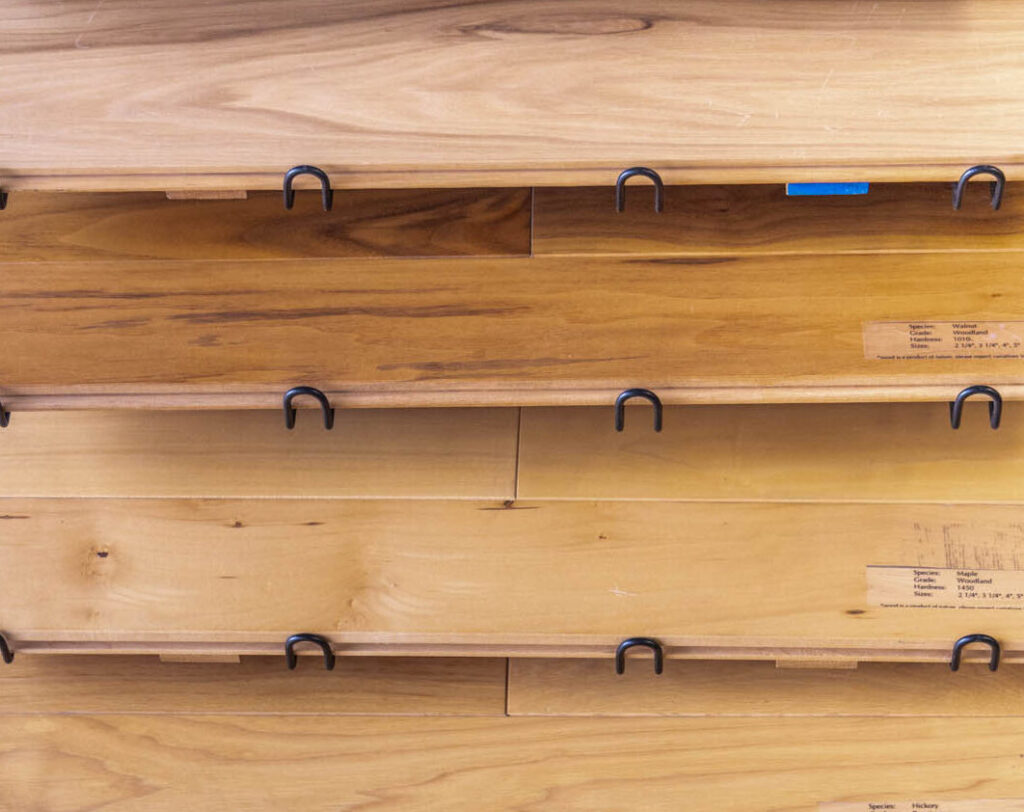
All sales available in store at our Savage location.
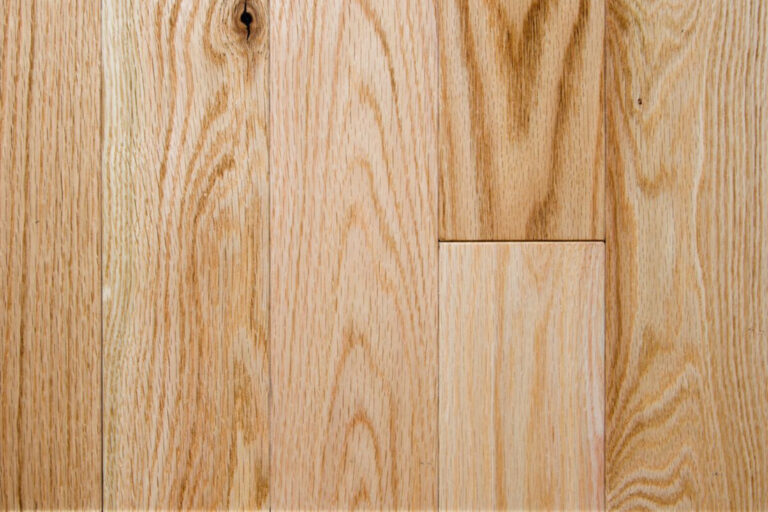

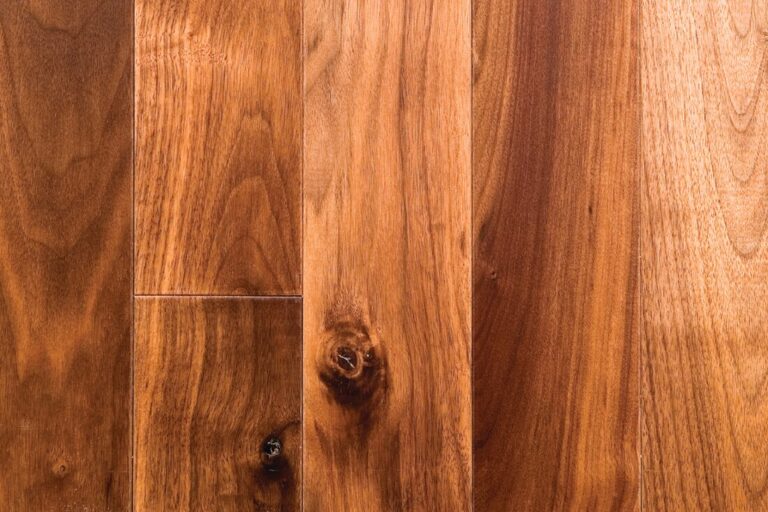
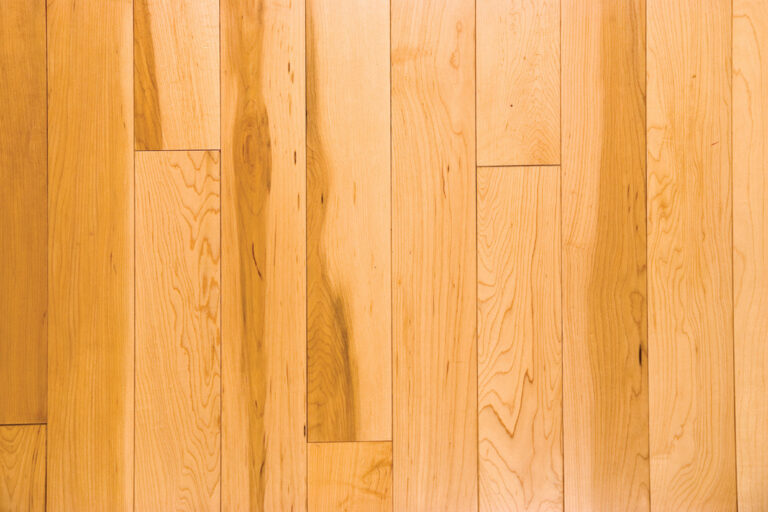
Whether you’re in store or online, we strive to provide all of the information you need to pick the perfect materials for your project. Use our exotic hardwoods selection guide to help point you to the right direction or visit our store to see our full inventory.
Red Oak is one of the most popular domestic hardwoods used in flooring throughout North America. Known for its strength, classic grain pattern, and excellent workability, Red Oak delivers timeless appeal and dependable performance. Whether used in traditional homes or modern spaces, it remains a go-to choice for hardwood flooring. Here’s a breakdown of its benefits:
Timeless Grain Pattern: Red Oak features a warm, reddish-tan tone with a pronounced, open grain that adds texture and visual interest. Its classic look suits a wide range of interior styles, from rustic to contemporary.
Strong and Durable: With a solid Janka hardness rating of 1,290, Red Oak provides a great balance of strength and workability. It stands up well to everyday wear and is suitable for medium- to high-traffic areas.
Excellent Stainability: Thanks to its open grain and consistent texture, Red Oak takes stains and finishes beautifully. It can be customized to match nearly any color palette—from light natural tones to dark, rich finishes.
Readily Available and Cost-Effective: As a widely harvested domestic species, Red Oak is typically more affordable and easier to source than many imported hardwoods, making it a practical yet stylish flooring option.
Reliable Dimensional Stability: Once properly installed and acclimated, Red Oak flooring remains stable with minimal expansion or contraction, even in environments with moderate humidity changes.
Easy to Refinish: Over time, Red Oak floors can be sanded and refinished multiple times, allowing homeowners to refresh the look or change the color without replacing the floor.
Fading Over Time: Like most natural hardwoods, Red Oak is photosensitive. Prolonged exposure to sunlight can cause subtle color changes over time, typically resulting in a slightly darker or amber tone. Using window treatments or UV-blocking finishes can help minimize noticeable fading.
Water Resistance: Red Oak is not highly water-resistant. While it handles normal foot traffic well, standing water or moisture can cause warping or staining. It’s best suited for dry, climate-controlled interiors and should be cleaned with a damp—not wet—mop.
Kids and Pets: Red Oak is a solid performer in active households, but it’s not immune to scratches and dents. Its open grain tends to hide minor wear better than smoother-grained species, and its refinishable surface makes long-term maintenance more manageable. For added protection, area rugs and protective pads under furniture are recommended.
White Oak is one of the most sought-after hardwoods for flooring, known for its refined appearance, superior durability, and ability to handle a wide range of stains and finishes. With a tighter grain and slightly harder composition than its red oak counterpart, White Oak offers both timeless beauty and rugged performance—making it a favorite for both modern and traditional interiors. Here’s a breakdown of its benefits:
Clean, Refined Grain: White Oak has a smoother, straighter grain pattern than Red Oak, giving it a more subtle and consistent appearance. It’s often chosen for minimalist, modern, or Scandinavian-style interiors.
Excellent Durability: With a Janka hardness rating of 1,360, White Oak is slightly harder than Red Oak and stands up well to daily wear, making it a great choice for high-traffic areas.
Closed Grain for Better Moisture Resistance: Unlike Red Oak’s open grain, White Oak has a tighter, closed-pore structure, giving it better resistance to water intrusion. This makes it more suitable for kitchens, entryways, and other areas where moisture is more common.
Great for Staining and Custom Finishes: White Oak’s neutral undertones make it extremely versatile when it comes to staining. It can take on a wide range of colors—everything from natural and blonde to rich dark browns and even gray washes.
Long-Term Performance: Like other premium hardwoods, White Oak can be sanded and refinished multiple times, allowing homeowners to refresh the look over the decades without replacing the entire floor.
Naturally Rot-Resistant: The same qualities that make White Oak a popular choice in boatbuilding—its rot resistance and tight grain—also make it a long-lasting flooring option in well-maintained homes.
Fading Over Time: White Oak holds its color better than many exotic species, but some natural darkening or ambering may occur with prolonged sun exposure. UV-protective finishes and window treatments can help preserve its original tone.
Water Resistance (Not Waterproof): While more moisture-resistant than Red Oak, White Oak is still a hardwood and not ideal for areas with frequent standing water. Spills should be cleaned up promptly to prevent damage.
Performance with Kids and Pets: Thanks to its hardness and smooth grain, White Oak hides scratches a bit better than softer woods. It’s a solid choice for active households, though pet nails and heavy toys can still leave marks. Applying a tough finish and using rugs in play areas can help protect the surface.
Price and Availability: White Oak is generally more expensive than Red Oak due to its higher demand and slower growth rate, but its longevity and broad aesthetic appeal often justify the cost for homeowners seeking a timeless investment.
Birch is a versatile and affordable hardwood flooring option, known for its light, creamy color tones and subtle, attractive grain. Popular in both traditional and modern interiors, Birch offers a smooth finish and a warm, welcoming aesthetic that works well across a wide range of design styles. While slightly softer than oak, it remains a dependable and budget-friendly choice for homeowners who want beauty without breaking the bank. Here’s a breakdown of its benefits:
Warm, Light Appearance: Birch typically ranges from pale yellow to light reddish-brown, often with subtle color variation that adds depth and character without overwhelming a space. It’s especially popular in airy, contemporary, or Scandinavian-style interiors.
Smooth, Closed Grain: With its fine, even texture and subtle grain, Birch offers a clean, modern look that’s ideal for minimalist or understated design schemes.
Affordable and Readily Available: Birch is typically less expensive than White Oak or Walnut, making it a great option for large spaces or budget-conscious projects without sacrificing visual appeal.
Takes Stain Well: Although naturally light, Birch accepts stains evenly, allowing homeowners to customize the tone to suit darker or richer finishes if desired.
Refinishable Surface: Like other hardwoods, Birch can be sanded and refinished multiple times, which helps extend the lifespan of the floor and allows for future style updates.
Prone to Dents and Dings: Birch is a relatively soft hardwood (with a Janka hardness around 1,260 for Yellow Birch and lower for Sweet Birch), which means it may show wear more quickly in high-traffic areas or homes with pets and kids. Protective pads, area rugs, and a durable finish can help minimize surface damage.
Color Variation: While some people love the natural tonal variation in Birch, others may prefer a more uniform appearance. If consistency is a priority, selecting carefully matched boards or opting for a stain can help.
Fading and Yellowing: Birch can be photosensitive and may develop a yellowish tint over time when exposed to sunlight. UV-protective finishes or window coverings can help slow the process and maintain a more neutral tone.
Moisture Sensitivity: Like most hardwoods, Birch does not perform well in areas with high humidity or standing water. It’s best used in dry, climate-controlled interiors and cleaned with a damp (not wet) mop.
Cherry is a luxurious hardwood known for its rich color, smooth grain, and timeless character. Often associated with fine furniture and high-end interiors, Cherry flooring brings warmth and elegance to any space. While it’s softer than some other hardwoods, its visual appeal and aging process make it a favorite for homeowners looking to create a sophisticated, classic look. Here’s a breakdown of its benefits:
Elegant, Warm Color: American Cherry starts with a light pinkish-brown tone that deepens over time into a rich reddish-brown patina. This natural darkening gives Cherry floors a timeless, lived-in beauty that improves with age.
Smooth, Refined Grain: Cherry features a fine, closed grain with subtle waves and occasional small knots or mineral streaks. Its soft, consistent texture gives it a clean, upscale appearance.
Easy to Work With: Cherry is a dream to sand, finish, and install. Its smooth surface takes stains and sealers evenly, although many homeowners prefer to highlight its natural color and let it darken naturally over time.
Warm Underfoot: Because Cherry is slightly softer than species like Oak or Maple, it feels a bit warmer and more comfortable underfoot—especially in residential settings.
Refinishable: Cherry can be sanded and refinished multiple times over its life, allowing homeowners to maintain or restore its appearance with ease.
Photosensitivity and Color Change: Cherry is one of the most photosensitive domestic hardwoods. It will darken significantly within the first few months of exposure to light. While many people appreciate this natural aging, it’s important to be aware that rugs or furniture can leave lighter “shadows” on the floor if moved too late. Rotating rugs and using window treatments can help manage this process more evenly.
Softer Surface: With a Janka hardness of around 950, Cherry is softer than many other hardwood flooring options. It can dent or scratch more easily in homes with pets, kids, or heavy foot traffic. Choosing a high-quality finish and using area rugs in high-traffic zones can help reduce wear.
Moisture Sensitivity: Like most hardwoods, Cherry is not recommended for wet or humid environments. It should be used in climate-controlled spaces and cleaned with minimal moisture to avoid cupping or swelling.
Premium Price Point: Cherry is often more expensive than more common species like Red Oak or Maple, but its unique color, elegance, and aging character make it a worthwhile investment for many homeowners.
Maple is a clean, durable, and versatile hardwood that’s widely used for flooring in both residential and commercial spaces. Known for its smooth grain, light color, and impressive hardness, Maple provides a sleek, modern aesthetic that holds up well to everyday wear. Whether left natural or lightly stained, Maple offers a bright, neutral canvas that works with nearly any interior style. Here’s a breakdown of its benefits:
Light, Contemporary Look: Maple ranges in color from pale cream to light tan with subtle mineral streaks and the occasional touch of reddish-brown. Its clean, uniform appearance makes it a popular choice for modern and minimalist spaces.
Hard and Durable: With a Janka hardness rating of around 1,450 (for Hard Maple), it’s one of the toughest domestic hardwoods available. Maple stands up well to heavy foot traffic, making it ideal for active homes, offices, and commercial settings.
Smooth, Consistent Grain: Maple has a fine, closed grain with minimal pattern variation. This uniformity gives it a sleek, clean-lined appearance that pairs well with contemporary design.
Stays Light Over Time: Unlike species like Cherry or Walnut, Maple does not darken significantly as it ages. This makes it a reliable choice for maintaining a light, fresh look for years to come.
Refinishable Surface: Like all solid hardwoods, Maple can be sanded and refinished multiple times throughout its lifespan, allowing for long-term performance and style flexibility.
Challenging to Stain Evenly: Maple’s tight grain structure can make it tricky to stain uniformly. Blotchy results are common with darker finishes, so many homeowners opt for a natural or lightly tinted look that enhances its natural beauty.
Less Forgiving of Scratches: Because of its light color and smooth surface, scratches and scuffs tend to be more visible on Maple than on more textured or darker woods. A matte or satin finish can help minimize the appearance of surface wear.
Moderate Photosensitivity: While Maple doesn’t darken dramatically, it may yellow slightly over time, especially with prolonged sun exposure. UV-resistant finishes and window coverings can help slow this process.
Moisture Sensitivity: Like most hardwoods, Maple isn’t suited for damp or high-humidity environments. It should be used in dry, temperature-controlled interiors and cleaned with minimal moisture to avoid warping or cupping.
Walnut is a premium hardwood flooring option prized for its deep, rich color and elegant grain. Known for its luxurious appearance and smooth texture, Walnut instantly adds warmth and sophistication to any interior. While slightly softer than other hardwoods, its unique aesthetic and timeless character make it a favorite for high-end residential spaces. Here’s a breakdown of its benefits:
Rich, Dark Color: Walnut ranges from chocolate brown to deep espresso with subtle purple or gray undertones. Its dark, dramatic color creates an upscale look that adds depth and contrast to lighter walls and furnishings.
Elegant Grain Pattern: Featuring a straight to wavy grain with occasional curls or swirls, Walnut has a refined, luxurious texture that finishes beautifully. The natural variation between boards adds visual interest without being overpowering.
Smooth Underfoot: Walnut’s slightly softer density gives it a warm, comfortable feel underfoot, which is ideal for bedrooms, living rooms, and low-traffic areas where comfort is a priority.
Lightweight and Workable: Walnut is easy to machine, sand, and finish, making it a good choice for custom installations and intricate flooring patterns.
Ages Gracefully: Over time, Walnut lightens slightly as it’s exposed to natural light, developing a soft, golden undertone while maintaining its overall richness. Many homeowners appreciate this natural patina.
Softer Surface: With a Janka hardness of about 1,010, Walnut is softer than species like Oak or Maple. It may dent or scratch more easily in high-traffic areas or homes with pets and young children. Choosing a durable finish and using area rugs can help preserve the surface.
Color Fades Slightly Over Time: While Walnut is naturally dark, it tends to lighten with UV exposure. This color shift can be minimized with window coverings or UV-resistant finishes.
Visible Wear Over Time: The darker tone of Walnut can show scratches, dust, and scuff marks more easily than lighter species. A matte or satin finish helps mask everyday wear and reduces maintenance headaches.
Premium Cost: Walnut is one of the more expensive domestic hardwoods due to its limited availability and high demand. However, many homeowners see it as a worthwhile investment for its timeless look and resale appeal.
Red Grandis is a plantation-grown hardwood native to South America, known for its warm color, consistent grain, and sustainable sourcing. As an increasingly popular option for hardwood flooring, Red Grandis offers a refined look with dependable performance—making it a smart choice for homeowners who want beauty, durability, and eco-conscious sourcing in one package. Here’s a breakdown of its benefits:
Warm, Elegant Color: Red Grandis typically features soft pinkish to medium reddish-brown tones that deepen slightly over time. Its natural warmth brings a welcoming, timeless feel to any interior.
Consistent Grain and Texture: With a fine, even grain and smooth texture, Red Grandis provides a clean, uniform appearance that works well in both traditional and contemporary designs.
Good Durability: With a Janka hardness of around 1,010, Red Grandis offers similar hardness to Cherry or Walnut—making it suitable for everyday residential use when paired with a quality finish.
Excellent Workability: Easy to cut, sand, and finish, Red Grandis is well-suited for custom flooring layouts and detailed trim work. It also accepts stains evenly, allowing for a range of finish options from natural to darker tones.
Sustainably Sourced: Red Grandis is grown on FSC-certified plantations, making it one of the more environmentally friendly hardwood flooring options on the market today.
Refinishable Surface: Like other solid hardwoods, Red Grandis flooring can be sanded and refinished multiple times throughout its lifespan, allowing for long-term style updates and maintenance.
Softer than Oak or Maple: Red Grandis is moderately hard, but not as dense as species like White Oak or Hickory. In high-traffic homes—especially those with pets or kids—some denting or surface wear may occur over time. A durable topcoat and use of area rugs can help protect the floor.
Color Sensitivity: While Red Grandis doesn’t darken as dramatically as Cherry, it may still experience mild color changes over time with exposure to sunlight. UV-blocking finishes and thoughtful furniture placement can help minimize uneven fading.
Moisture Management: As with most hardwoods, Red Grandis should be installed in climate-controlled environments. It’s not recommended for bathrooms or areas with high humidity unless used in engineered form and properly sealed.
Less Common Availability: While Red Grandis is growing in popularity, it may not be as readily available as traditional species like Oak or Maple. This could slightly affect lead times or cost depending on the supplier.
Hickory is one of the hardest domestic hardwoods available, prized for its bold grain variation, rustic charm, and unbeatable durability. Known for its strength and distinctive appearance, Hickory is a favorite for homeowners who want flooring that makes a statement while standing up to daily wear and tear. It’s especially popular in high-traffic homes, cabins, and spaces that embrace natural character. Here’s a breakdown of its benefits:
Extreme Hardness and Durability: With a Janka hardness rating of around 1,820, Hickory is one of the toughest hardwood flooring options on the market. It resists dents, scratches, and impact better than most species—making it ideal for active households with pets and kids.
Distinctive Grain and Color Variation: Hickory offers bold contrast between light and dark tones, often within the same board. This natural variation gives it a rustic, organic look that works well in farmhouse, lodge, and eclectic design styles.
Long Lifespan: Thanks to its density and resilience, Hickory floors can last for decades with proper care. It’s a great long-term investment for those seeking both strength and visual appeal.
Refinishable Surface: Despite its toughness, Hickory can be sanded and refinished multiple times over its lifespan. This allows homeowners to maintain or update the look of the floor without needing a full replacement.
Good for High-Traffic Areas: Whether it’s a busy living room, entryway, or open-concept space, Hickory handles foot traffic, dropped items, and daily use exceptionally well.
Bold, Variable Appearance: While many love Hickory’s natural variation, its dramatic contrast may not suit homeowners seeking a uniform or minimalist look. Staining can help tone down the variation, but it won’t eliminate it completely.
Harder to Work With: Hickory’s extreme hardness makes it more challenging to cut and install, especially for DIY projects. It also requires sharp tools and may be more expensive to install due to labor intensity.
Susceptible to Seasonal Movement: Because of its density, Hickory can expand and contract more noticeably with humidity changes. It’s important to allow proper acclimation before installation and to maintain stable indoor humidity levels year-round.
Can Be Noisy Underfoot: Due to its density and hardness, Hickory flooring can sometimes produce more sound when walked on. Underlayment and area rugs can help soften footfall in certain areas.
Poplar is a lightweight, budget-friendly hardwood that’s commonly used in millwork, cabinetry, and furniture—but it’s less common for flooring. While not typically chosen for high-traffic areas due to its softness, Poplar can still be a viable option for specific flooring applications where cost, ease of installation, and a unique appearance are prioritized. Here’s a breakdown of its benefits:
Affordable and Accessible: Poplar is one of the most cost-effective hardwoods on the market, making it an attractive choice for large spaces, budget-conscious renovations, or secondary rooms like home offices, craft spaces, or bedrooms.
Smooth, Uniform Texture: Poplar has a fine, consistent grain and a smooth surface that’s easy to sand and finish. It provides a clean, minimalist aesthetic when sealed or painted.
Takes Paint and Stain Well: Though often used with clear finishes to showcase its natural character, Poplar readily accepts stains and paint. It can be customized to resemble higher-end species or used creatively in colorful or distressed flooring designs.
Lightweight and Easy to Install: Because of its lower density, Poplar is easier to handle, cut, and install than harder hardwoods—ideal for DIY-friendly projects or fast-turnaround flooring needs.
Sustainable Option: Poplar grows quickly and is widely available in the U.S., making it a renewable and environmentally responsible choice.
Soft and Prone to Dents: With a Janka hardness of around 540, Poplar is much softer than traditional flooring species like Oak or Maple. It dents and scratches easily, making it a poor fit for high-traffic areas or homes with pets and children unless extra care is taken.
Visible Wear and Tear: Poplar’s light, sometimes greenish or purplish tones tend to show scuffs, wear marks, and discoloration more easily. A high-quality finish can help reduce this, but some signs of wear will still be noticeable over time.
Not Ideal for Moist Environments: Like other soft hardwoods, Poplar is sensitive to moisture and should only be installed in dry, climate-controlled interiors.
More Common in Rustic or Creative Settings: Because of its unique grain and color variation, Poplar flooring is often used in artistic, reclaimed, or farmhouse-style interiors rather than luxury or ultra-modern designs.
Our showroom has variety of samples allowing your to check out samples before you place an order. Our selection of hardwood flooring includes:
If you would like to see the full offering of Musolf Flooring, you can visit their website or visit of their showrooms.
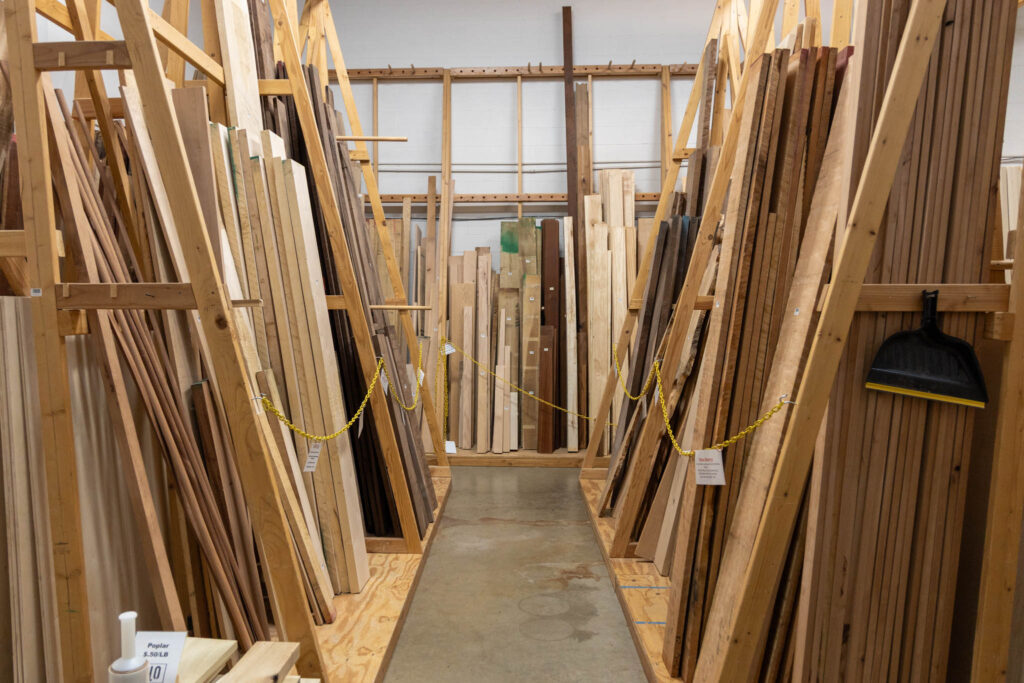
Discount Lumber also maintains an expansive selection of domestic hardwoods. Our selection of domestics include:
Explore Minnesota’s largest selection of exotic hardwoods! From Padouk to Zebrawood, we have it all.
Complete your home with elaborate custom moulding. Whether you’re looking for casing, architectural, or pre-primed moulding, Discount Lumber has you covered.
Craft custom butcher block cuting boards and countertops from premium materials provided by Discount Lumber.
Leave the heavy lifting to us. Our shop offers sanding and planing services so you can spend more time building your project.
Site Design by JBC